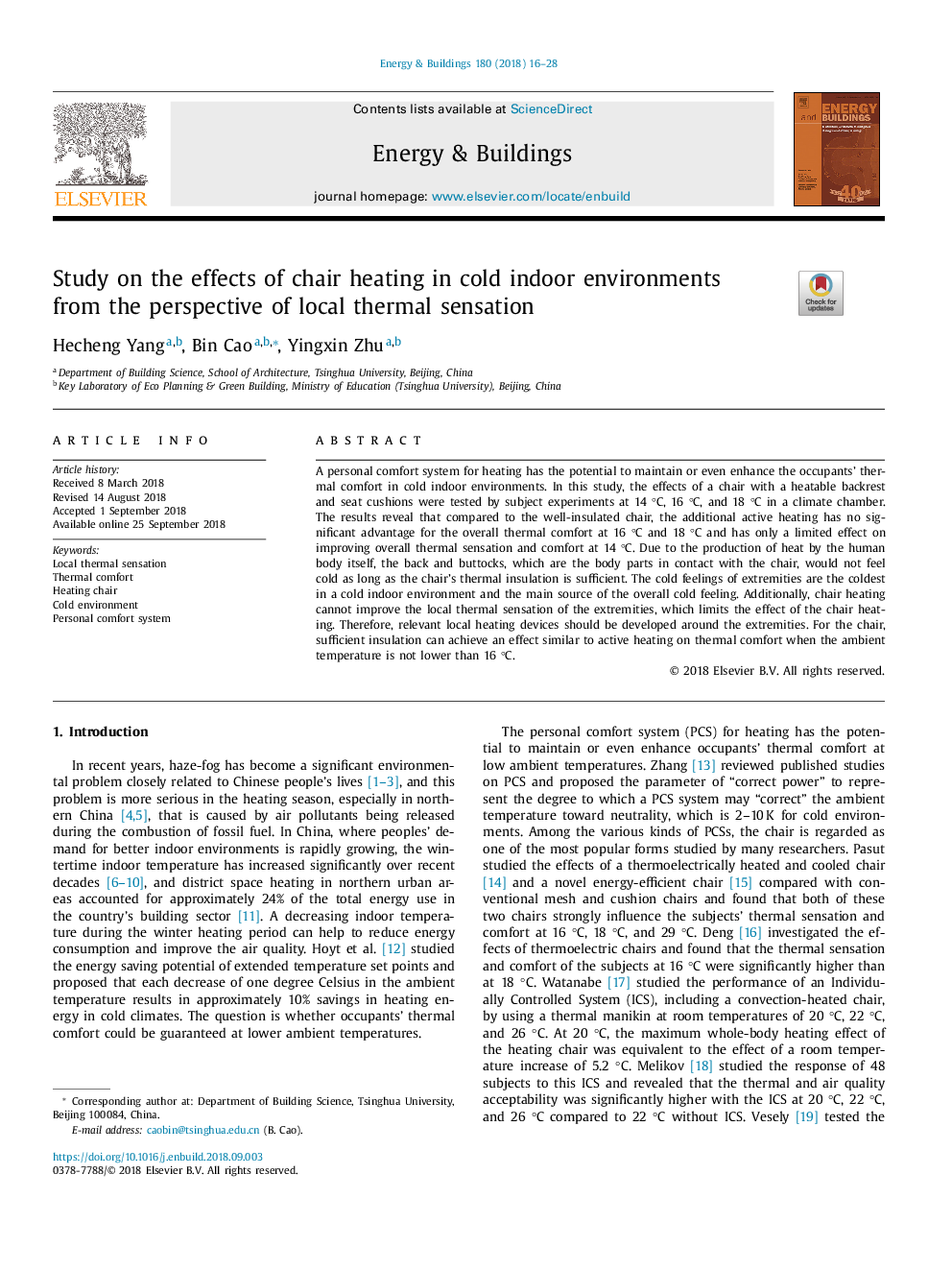| Article ID | Journal | Published Year | Pages | File Type |
|---|---|---|---|---|
| 11012586 | Energy and Buildings | 2018 | 13 Pages |
Abstract
A personal comfort system for heating has the potential to maintain or even enhance the occupants' thermal comfort in cold indoor environments. In this study, the effects of a chair with a heatable backrest and seat cushions were tested by subject experiments at 14 °C, 16 °C, and 18 °C in a climate chamber. The results reveal that compared to the well-insulated chair, the additional active heating has no significant advantage for the overall thermal comfort at 16 °C and 18 °C and has only a limited effect on improving overall thermal sensation and comfort at 14 °C. Due to the production of heat by the human body itself, the back and buttocks, which are the body parts in contact with the chair, would not feel cold as long as the chair's thermal insulation is sufficient. The cold feelings of extremities are the coldest in a cold indoor environment and the main source of the overall cold feeling. Additionally, chair heating cannot improve the local thermal sensation of the extremities, which limits the effect of the chair heating. Therefore, relevant local heating devices should be developed around the extremities. For the chair, sufficient insulation can achieve an effect similar to active heating on thermal comfort when the ambient temperature is not lower than 16 °C.
Related Topics
Physical Sciences and Engineering
Energy
Renewable Energy, Sustainability and the Environment
Authors
Yang Hecheng, Cao Bin, Zhu Yingxin,
